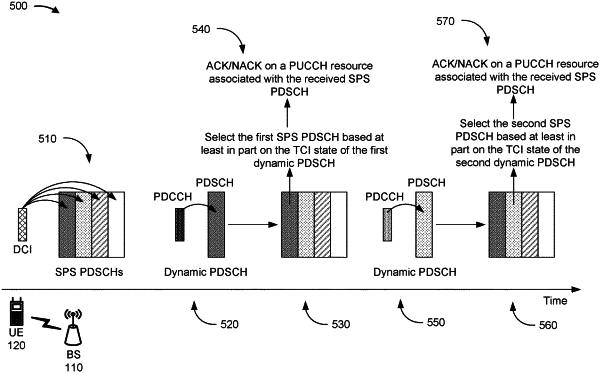| CPC H04W 72/30 (2023.01) [H04L 1/1896 (2013.01); H04W 72/046 (2013.01); H04W 72/0446 (2013.01); H04W 72/0453 (2013.01); H04W 72/1273 (2013.01); H04W 72/23 (2023.01)] | 30 Claims |

|
1. An apparatus for wireless communication at a user equipment (UE), comprising:
a memory; and
one or more processors, coupled to the memory, configured to:
receive a configuration indicating a plurality of semi-persistent scheduling (SPS) physical downlink shared channel (PDSCH) communications associated with a multicast service; and
receive, based at least in part on determining that a reception condition is satisfied, an SPS PDSCH communication of the plurality of SPS PDSCH communications, wherein the reception condition is determined to be satisfied based at least in part on determining that a first transmission configuration indicator (TCI) state associated with a dynamic physical downlink control channel (PDCCH) communication is different than a second TCI state associated with the SPS PDSCH communication and on determining that a source synchronization signal block (SSB) corresponding to the first TCI state corresponds to the second TCI state.
|